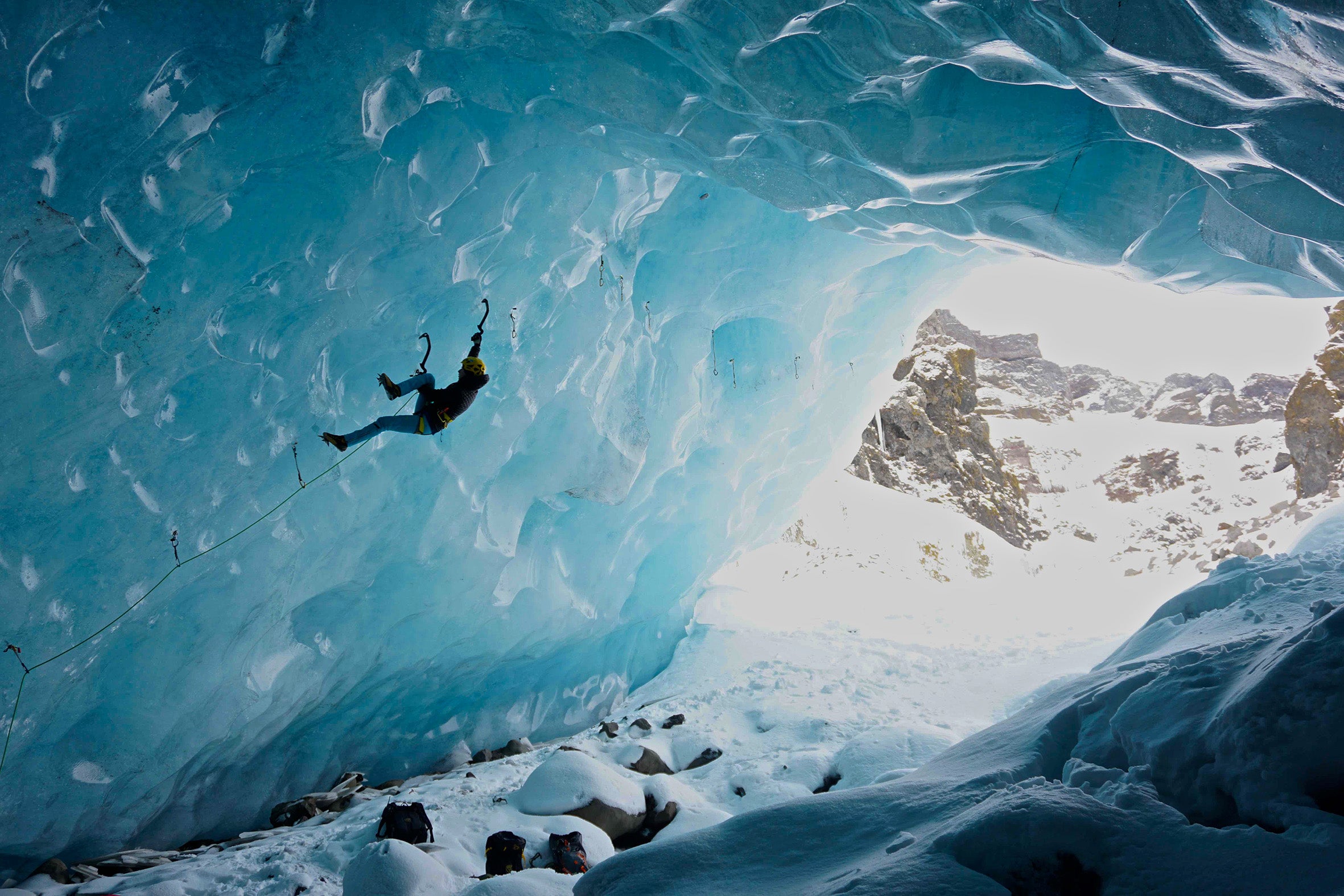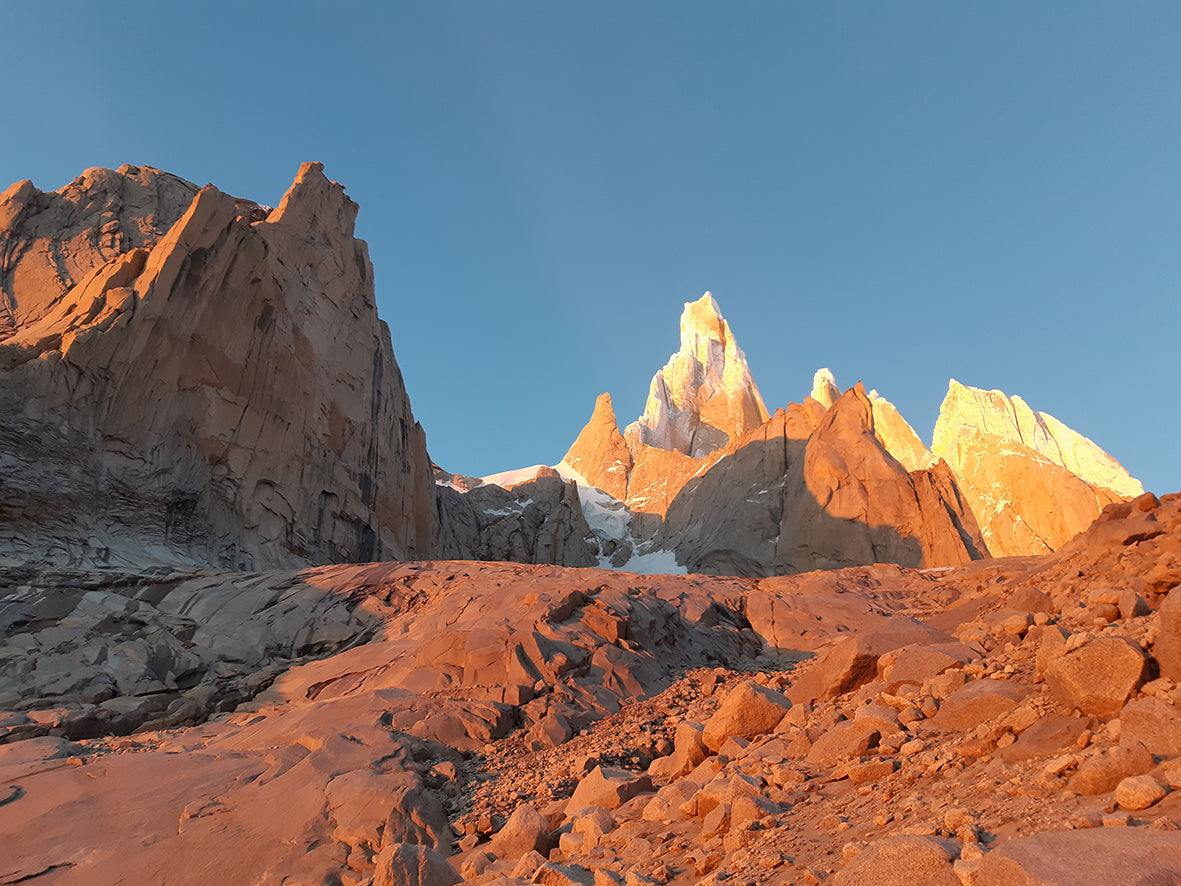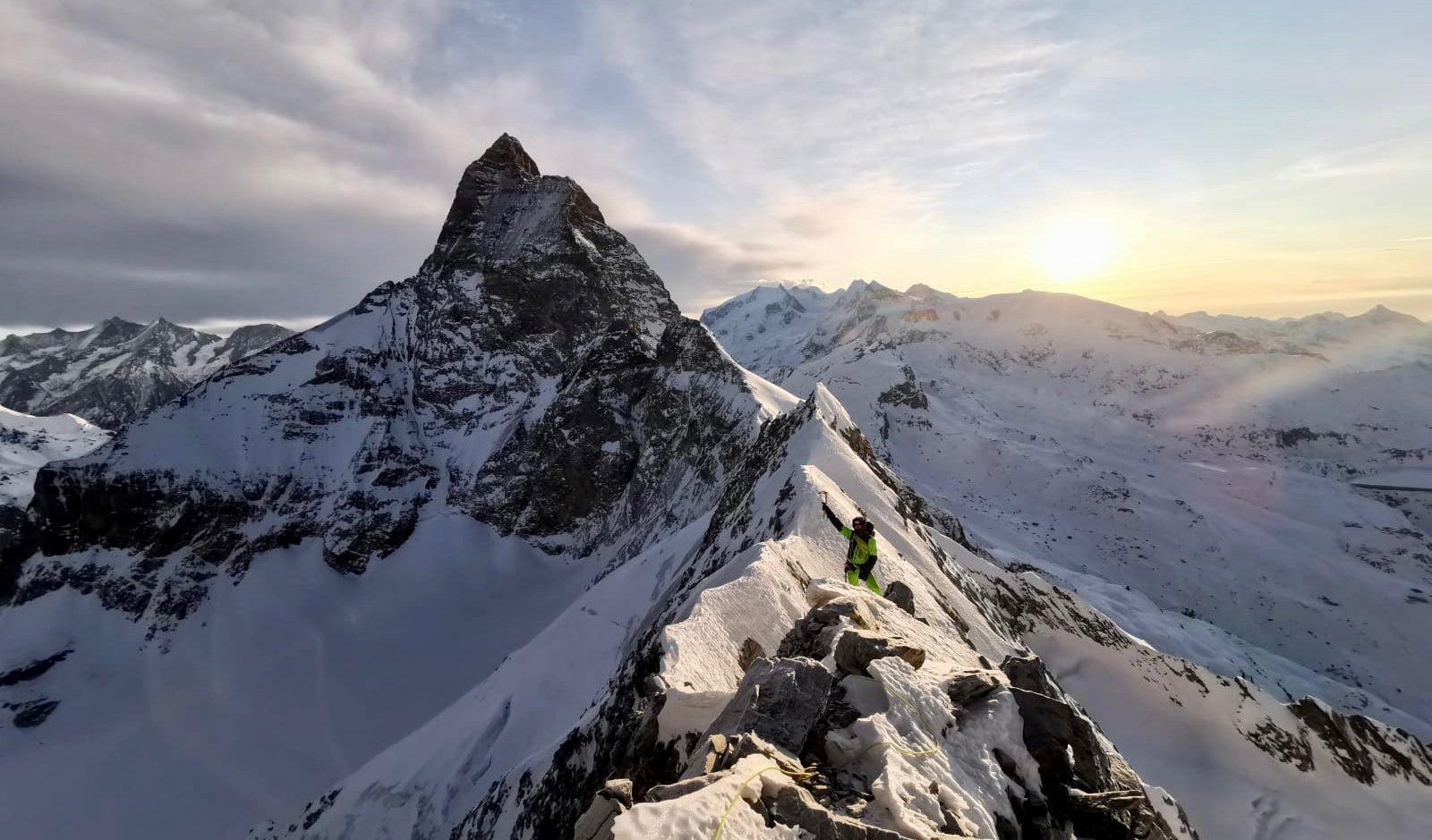
Icelandic ice by Angelika Rainer
Published on 20/03/2020
None of the three of us had ever been to Iceland, neither I, nor my partner Marco, nor even my friend Maurizio, who accompanied us on this trip. For this reason, our curiosity was great. The English name "Iceland" could mean only one thing, that ice lovers like us can have a nice playground to climb; already the view of the island from the airplane window, painted pink by the last rays of the sun, was magical. Taking our Defender 4x4 and meeting our friend and local guide Matteo, who has lived in Iceland for 7 years, we headed towards the southeast of the island, towards Vatnajökull national park, the largest ice cap in Iceland, where we wanted to spend the next few days. After a morning spent in the car, with a short stop recommended by Matteo to the beautiful "Black Beach", we set off towards a first climb. Driving to reach this glacier tongue was quite adventurous, along a dirt track with deep holes and puddles whose depth was not understood. Fortunately, at least the approach of this first day was short and the sight of this very compact ice wall left us breathless! Swinging ice axes and crampons in this ice about 200 years old seemed almost sacrilege, fortunately Matteo explained that the holes close quickly, with fresh snow and sun, in the course of a few days. Here we immediately chose two lines to climb; both had an overhanging exit, as if it were a sail inflated by the wind, and the color of this ice went from black on the bottom because of the lava ash, to blue on the top: a spectacle of nature!

The next day we left loaded, not only with ideas, but also with gear in our backpack, since we did not know the conditions that awaited us; so we decided to bring single, double and static ropes to take photos. Our goal for this trip was to climb three different types of ice: the ice caves, the so-called 'mills' or vertical holes in the glacier and the classic waterfalls. Already during the preparations for the trip Matteo had explained to us that the mills in winter could have been covered by snow, which turned out to be true, but we wanted to check with our own eyes before abandoning the idea. The ice cave instead we were sure to find it, independent of snow and high or low temperatures. The first sight of this natural ice cave was truly breathtaking; a long blue tunnel created by the stream that made its noisy entry into the tongue of the glacier, with glistening ice on the edges, increasingly darker towards the inside. Fascinated by this possibility of climbing on overhanging ice, Maurizio immediately set to work to equip a line with ice screws and then we attempted a first climb. To make the most of the day we decided to go in search of the mills in order to better plan the following days. Unfortunately, both the mills found that afternoon, and also those of the following day, in another part of the glacier, were closed by snow and there was no way to climb them, but they still gave us the opportunity to admire a fantastic glacier, and to walk the whole day through the ice and snow dunes that created wonderful formations.

Matteo and Maurizio decided to climb the only waterfall in the area that had remained in condition after the hot days of the previous week, Marco and I instead opted to go ahead, with the aim of verifying the access of other glaciers, and to take advantage of the panoramic side of the trip. The visit to the lagoon was truly unique, huge icebergs that detach themselves from the glacier and that slowly make their way to the sea, other pieces of icebergs that are thrown back on the beach by the waves, where thanks to the sun, they seem to become diamonds of various sizes and shapes, and give the beach the name "Diamond Beach".


The next day, however, we attempted to free our cave route. I left very motivated, but in the middle I got stuck with an ice axe that didn't come out of the ice anymore because I had positioned it badly. I fought for several minutes in the overhanging roof of the cave, before being able to remove the ice axe and continue climbing until I stopped, I was very happy to have been able to climb for the first time in my life this type of formation, beautiful, but impossible to find on our mountains.


Maurizio also managed to finish the route, so for once we did not go home in the dark and we used the late afternoon to cook a nice Icelandic lamb leg with local baked potatoes.
Looking at the weather forecast in Iceland is essential. For days we had seen the coming of a day with a lot of snow and when suddenly a strong wind came, and here with very strong we mean 150 km/h, it was immediately clear that this would be a perfect day of rest. Given the very limited visibility and the danger of breaking the glass of the cars due to the violent wind, the local civil protection has closed all roads. All night long we heard the very strong howling wind, and in the morning the first analysis of the weather for the following days revealed what would have been the great disappointment: another storm was approaching with snow and wind. After a brief analysis it was clear that the only option to be sure of arriving at the airport and after three days being able to return home, was to leave immediately to Reykjavik. We made the most of our last two days by visiting scenic places like the geysir and the historic center of Reykjavik, climbing in the snowstorm would have been unthinkable. In Iceland the beauty of nature is unlimited, but so is the force of nature. A special thanks goes to Matteo Meucci for guiding us in this difficult environment.
photo by Marco Servalli and Matteo Meucci
article by Angelika Rainer

Angelika Rainer, 32 years old Grivel athlete since 2005. Born in South Tyrol (Italy), she became three times Ice Climbing World Champion and two times Ice Climbing World Cup winner. Today she practices rock climbing, ice climbing and drytooling.
Grivel favorite product: Dark Machine X ice axes


